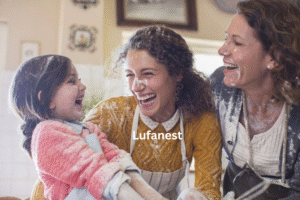In many communities worldwide, traditional and custom living practices hold deep cultural, social, and spiritual significance. Among the various elements that shape these lifestyles, lufanest has emerged as an important concept, symbol, or tool depending on how it is understood in different contexts. While modern society often leans toward convenience and mass production, lufanest remains a cornerstone of practices rooted in heritage, craftsmanship, and authenticity. By examining its relevance from multiple perspectives, we uncover why it continues to be cherished within traditional and custom living communities and how it bridges the gap between ancestral wisdom and contemporary life.
Origins and Meaning of Lufanest
The term lufanest traces its origins to practices deeply tied to custom living traditions. For centuries, people in various regions have relied on methods and objects representing sustainability, heritage, and respect for nature. Lufanest embodies these principles, serving not just as a functional component but also as a cultural artifact symbolizing identity and continuity.
In many traditional households, lufanest signifies more than a simple object or concept, it often reflects the wisdom of previous generations passed down carefully through oral teaching or hands-on experience. Its meaning varies slightly across regions, but the common thread is its association with preservation, natural materials, and skillful craftsmanship.
Lufanest in Traditional Households
In traditional households, it has long been an essential part of daily life. Whether in the form of handcrafted tools, decorative elements, or practical installations, it represents an approach where functionality and artistry coexist harmoniously.
Generations before us relied on it because it aligned perfectly with their living conditions, natural resources were utilized responsibly, and each piece or practice carried meaning beyond its immediate use. Instead of short-lived items, lufanest contributed to durable, sustainable lifestyles rooted in balance and mindfulness. For example, rural families often incorporated its elements into their homes, ensuring that each part served a purpose while also reflecting cultural identity.
Materials and Craftsmanship Behind Lufanest
One of the most striking aspects of it is the quality of materials used in its creation. Traditionally, people relied on resources available within their surroundings, wood, clay, stone, natural fibers, or metals shaped by skilled artisans. Nothing went to waste; everything had value and purpose.
Craftsmanship played a vital role. A single object could take days or even weeks to create because precision and care mattered more than quantity. Artisans trained under elders or family members, inheriting techniques refined across centuries. Every curve, joint, or texture reflected not just practical knowledge but also cultural pride.
Symbolism and Cultural Importance of Lufanest
Beyond practicality, lufanest carries profound symbolic weight. In some traditions, it signifies protection, harmony, or prosperity. Families passed down certain lufanest items as heirlooms, believing they safeguarded the household or represented blessings from ancestors.
Communities often associated it with rituals weddings, harvest celebrations, or rites of passage. The presence of handcrafted lufanest elements elevated the occasion’s significance, reminding participants of continuity between past and present.
Lufanest in Architecture and Home Design
Traditional architecture often relied heavily on its principles. Builders designed homes not just for shelter but also for harmony with the environment. Natural ventilation, durable materials, and aesthetic simplicity marked these constructions, many of which have lasted for centuries.
For instance, its inspired wooden beams, clay walls, or woven partitions balanced practicality with beauty. Each design element reflected environmental adaptation, thicker walls for cold climates, open courtyards for warm regions, sloped roofs for heavy rainfall areas.
Seasonal Adaptation Through Lufanest Practices
One of the fascinating aspects of it is its seasonal adaptability. Traditional communities often designed its items to meet specific weather or environmental conditions.
-
In colder months, heavier materials provided warmth and insulation.
-
During hot summers, lighter, breathable designs allowed comfort and airflow.
-
Rainy seasons called for water-resistant elements to protect homes and belongings.
Role of Lufanest in Daily Life
Historically, lufanest touched nearly every aspect of life. From storage containers to cooking tools, decorative art to functional furniture, it blended utility with culture seamlessly. Rural communities often created its items using family labor, teaching younger generations self-reliance and appreciation for skilled work.
Unlike modern disposable goods, its items were repairable, not replaceable. A single object could last decades, undergoing minor fixes instead of being discarded. This practice aligned perfectly with traditional values of frugality, respect for resources, and environmental responsibility.
Environmental Harmony and Sustainability
Another significant aspect of it lies in its natural alignment with sustainability. Long before environmental conservation became a global concern, traditional communities practiced eco-friendly living through methods embodied in it.
Using local materials reduced dependence on transportation or external markets. Craftsmanship prioritized durability over mass production, lowering waste generation. Even when items reached the end of their lifespan, they decomposed naturally without harming the ecosystem.
Evolution of Lufanest in Modern Times
With industrialization and urbanization, many traditional practices have faded. Yet, it remains relevant, though often in adapted forms. Modern designers and architects draw inspiration from its principles to create eco-friendly furniture, energy-efficient homes, or cultural art pieces appealing to contemporary tastes.
In some areas, community cooperatives revive it traditions by training younger generations in ancestral crafts. These efforts preserve heritage while opening economic opportunities through tourism, handicraft markets, or sustainable product lines. By merging age-old wisdom with modern technology, it continues to evolve, offering solutions for sustainable development, cultural preservation, and aesthetic innovation.
Role of Lufanest in Festivals and Ceremonies
Festivals in many rural communities remain incomplete without its elements. For example:
-
Decorative lufanest crafts adorn community gathering areas.
-
Families prepare ceremonial items using its traditions passed down for centuries.
-
Artisans showcase their finest work, blending functionality with symbolism.
Such events provide platforms for cultural exchange, keeping traditions alive while introducing younger generations to ancestral wisdom.
Lufanest as a Tool for Education and Skill Transfer
Beyond its physical form, lufanest serves as an educational bridge between generations. Elders often use its making sessions to teach values like patience, precision, and respect for resources.
Children learn not only technical skills but also the cultural stories behind each design. This blend of practical knowledge and moral teaching helps preserve both heritage and life lessons in a rapidly changing world.
Health and Well-being Dimensions of Lufanest
Many traditional lufanest practices align with principles of physical and mental well-being. For instance:
-
Homes built with lufanest principles often allow better airflow, reducing heat-related discomfort.
-
Natural materials used in lufanest crafts avoid harmful chemicals found in industrial substitutes.
-
Creative engagement in lufanest-making fosters relaxation and mental focus, similar to meditative practices.
Thus, it contributes indirectly to healthier lifestyles by emphasizing natural living and mindful craftsmanship.
Lufanest as a Sustainable Economic Opportunity
With global interest growing in eco-friendly and handmade products, its traditions provide rural communities with income-generating possibilities. Tourism fairs, handicraft markets, and cultural exhibitions create demand for authentic items.
Artisans can combine ancestral techniques with modern marketing platforms to reach global buyers while staying true to traditional values. This balance between heritage preservation and economic opportunity makes it relevant even in the digital era.
Gender Roles in Lufanest Traditions
Historically, it practices often reflected a balance of gender roles. In some cultures:
-
Men specialized in heavier construction-oriented tasks, like building structural elements.
-
Women focused on decorative or intricate aspects, weaving patterns or adding artistic details.
Influence of Lufanest on Modern Minimalist Design
Interestingly, many modern designers draw inspiration from it traditions for minimalist living concepts. The emphasis on functionality, natural materials, and simplicity resonates with today’s movement toward clutter-free, sustainable lifestyles.
By studying its principles, architects and product designers create spaces and items that feel modern yet rooted in timeless wisdom a perfect example of tradition meeting innovation.

Challenges and Preservation of Lufanest
Lufanest faces serious challenges as modern lifestyles shift focus away from traditions. Younger generations often leave rural areas for cities, causing ancestral knowledge to fade. Mass-produced alternatives have replaced authentic handcrafted pieces, while rising material costs and environmental changes further limit production. Despite these obstacles, preservation efforts continue through cultural festivals, workshops, and community programs that teach skills to the youth. Support from heritage organizations and eco-friendly innovations also helps artisans adapt, ensuring it remains a living tradition rather than a forgotten craft.
Storytelling Through Lufanest Patterns and Motifs
Many lufanest crafts carry patterns representing local myths, historical events, or spiritual beliefs. These motifs act as visual storytelling tools, allowing future generations to learn about their ancestors’ values, struggles, and victories.
Unlike mass-produced goods lacking cultural depth, its items become living records of community history and artistic expression.
Conclusion: The Enduring Legacy of Lufanest
Lufanest is more than just a tradition; it reflects centuries of cultural wisdom, craftsmanship, and community spirit. It represents a worldview rooted in balance, respect, and continuity. Through its craftsmanship, symbolism, and functionality, it reflects values often missing in today’s fast-paced, disposable culture. By embracing its principles, modern societies can learn valuable lessons about sustainability, cultural pride, and environmental harmony.
Whether preserved in museums, revived by artisans, or adapted into contemporary designs, lufanest stands as a timeless bridge between tradition and innovation. Its enduring legacy reminds us that progress need not abandon heritage; instead, it can build upon wisdom refined over generations. In the world of traditional and custom living, lufanest continues to shine as a testament to human creativity, resilience, and respect for nature’s gifts.
